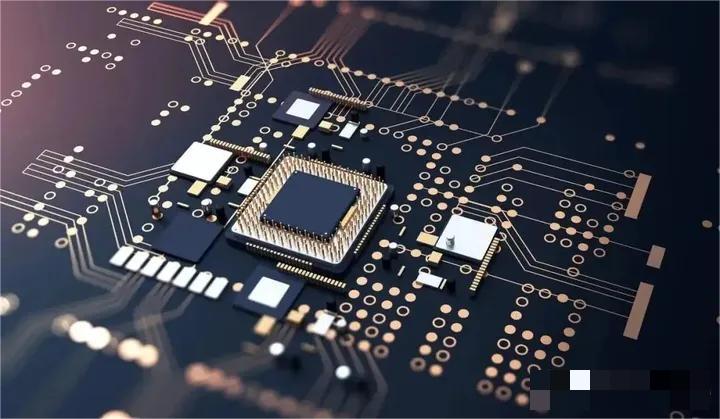7 Hot IC Parts You Need to Know: In-Depth Analysis & Selection Guide
With the rapid advancement of industrial automation, the Internet of Things (IoT), and new energy technologies, the demand for high-performance chips continues to grow. This article focuses on seven popular chip models currently in the market, covering four categories: Transceivers, Regulators, Amplifiers, and Microcontrollers (MCUs). It also provides a selection guide to help engineers and designers better understand and choose suitable chips.
Transceiver Chips
The ISO3082DWR is a high-performance isolated transceiver supporting data transfer rates up to 5Mbps, with low-power characteristics. It is suitable for industrial automation and automotive electronics. Widely used in CAN bus communication, especially in applications requiring high isolation voltage (5kVrms), such as battery management systems in electric vehicles and industrial control networks.
Key Parameters: ±15kV ESD protection, isolation voltage of 2.5kVrms, half-duplex communication, 20Mbps data rate.
The MAX13487EESA+T is a low-power, highly integrated CAN transceiver supporting a data rate of 1Mbps, with fault protection features. It is suitable for automotive electronic control units (ECUs) and industrial automation equipment, particularly in applications requiring low power consumption and high reliability.
Key Parameters: RS-485/RS-422 standard, 3.3V power supply, integrated fail-safe protection, 25Mbps data rate.
Regulator Chips
The TPS62867RQYR is a highly efficient synchronous buck converter supporting an output current of 6A, with low quiescent current and fast transient response. It is suitable for devices requiring high efficiency and low power consumption, such as embedded systems, industrial power supplies, and communication equipment.
Key Parameters: Synchronous buck converter, input voltage 2.7-6V, output current 3A, efficiency up to 95%.
The UCC3895DW is a high-performance digital power controller supporting multiphase power management, with high-precision voltage regulation. Due to its high-precision regulation, multiphase control support, and high reliability, it is widely used in power management for servers, data centers, and high-performance computing devices.
Key Parameters: Phase-shifted full-bridge controller, wide input voltage range (8-40V), programmable soft start.
The TPS259251DRCR is a USB Type-C power controller supporting the Power Delivery (PD) protocol, with overcurrent and overvoltage protection. It offers high power output (up to 100W), high integration, and low power consumption, making it widely applicable to fast-charging solutions for smartphones, tablets, and laptops.
Key Parameters: Electronic fuse (eFuse), input voltage 2.7-18V, adjustable current limit (0.5-5A).
Amplifier & Microcontroller Chips
The AD8092ARZ is a high-speed, low-power operational amplifier with a wide bandwidth (160MHz) and low distortion. It is widely used in high-speed signal processing, communication equipment, and audio amplifiers.
Key Parameters: High-speed operational amplifier, bandwidth 500MHz, slew rate 1400V/µs, low noise (1.7nV/√Hz).
The MSP430F149IPMR is a low-power 16-bit microcontroller ic with rich peripheral interfaces and high integration. It features low-power design (standby current as low as 0.1µA), high integration, and support for multiple communication protocols. It is widely used in IoT devices, sensor networks, and embedded control systems.
Key Parameters: 16-bit RISC architecture, 16KB Flash, 512B RAM, ultra-low power (1.8-3.6V).
IC Selection Guide: Matching Requirements with Chip Characteristics
1. Transceiver Selection Tips
● Transmission Distance and Rate: For short-distance high-speed communication, choose MAX13487 (25Mbps); for long-distance isolation, choose ISO3082 (supports CAN bus).
● Isolation Requirements: Prioritize isolation ratings (e.g., ISO3082’s 2.5kVrms) for industrial applications.
2. Regulator Chip Selection Strategy
● Output Current: For low-current scenarios (<3A), choose TPS62867; for high-power systems, choose UCC3895 (supports multiphase control).
● Protection Features: For dynamic power protection, TPS259251’s eFuse feature is an ideal choice.
3. Amplifier & MCU Selection Suggestions
● Signal Type: For high-frequency signal processing, AD8092 (500MHz bandwidth) is a must-have; for low-speed sensor signals, a lower-cost op-amp can be selected.
● Power Consumption and Integration: MSP430F149, with ultra-low power consumption and rich peripherals, is suitable for IoT end devices.
Conclusion
Recent popular chip models cover multiple fields, from communication to power management, signal amplification to microcontrollers. Each chip has unique features and application scenarios. Engineers should comprehensively consider specific requirements and performance metrics during selection to ensure optimal system performance and reliability.

Appendix: Quick Reference Table for Popular Chips
Model | Type | Key Parameters | Typical Applications |
ISO3082DWR | Transceiver | 2.5kV isolation, 20Mbps | Industrial CAN bus |
MAX13487EESA+T | Transceiver | 25Mbps, 1µA standby | RS-485 communication network |
TPS62867RQYR | Regulator | 3A output, 95% efficiency | Power supply for portable devices |
UCC3895DW | Regulator | Phase-shifted full bridge, 40V input | High-power switching power supply |
TPS259251DRCR | Regulator | 5A current limit, reverse blocking | USB PD protection |
AD8092ARZ | Amplifier | 160MHz bandwidth, 1.7nV noise | High-speed signal processing |
MSP430F149IPMR | MCU | 16-bit, 0.1µA standby | Low-power sensor nodes |
Website: www.conevoelec.com
Email: info@conevoelec.com








